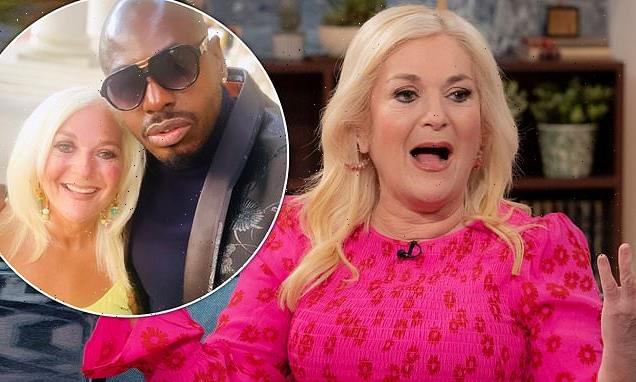“I want to look like a 31-year-old without any stress,” Latina content creator Tefi Pessoa says in a TikTok video from August 2021. In the video, she shares her experience with Botox and cheek filler to her audience of loyal followers, all in an effort to start an open and honest conversation about influencers and cosmetic procedures.
Pessoa tells POPSUGAR she’s been getting cheek filler for a year and a half now, maintaining touch-up appointments every six to nine months to maintain a more chiseled appearance. While she doesn’t believe fillers alone can empower someone, the decision for her came down to wanting to enhance her natural features while obtaining more definition overall.
“I just like a nice cheekbone on me,” she says. “I definitely had a rounder face, and the fillers gave me more of a sharper shape without having me look crazy . . . I decided to keep going back because I liked the way I looked. While the work I got was minimal, I definitely felt a boost in my confidence.”
According to facial plastic surgeon Julio F. Gallo, MD, cheek fillers have become increasingly popular over the past few years thanks to the lifting effect created by properly placed hyaluronic acid. “Cheek fillers can be used to replace the volume that is normally lost with the aging process, to create contour, and, of course, to provide a subtle lifting effect,” he tells POPSUGAR.
This procedure is especially popular with Latina clients, according to Dr. Gallo, who believes this is because of their understanding and desire to create a natural-looking contour and depth in their cheeks that provide a younger, more balanced look to the face. Dermal fillers, especially ones in the cheek, help give the illusion of wearing makeup without anything at all.
Most fillers are made of hyaluronic acid, but Dr. Gallo explains that it’s the way they are processed in different areas of your face that create specific physical characteristics. According to Cleveland Clinic, healthcare providers offer many kinds of cheek fillers, and your certified provider should discuss the best option for you. Brands like Juvéderm and Restylane use hyaluronic acid, the most common filler and a naturally-occurring substance that exists in your skin. Other fillers include calcium hydroxylapatite (CaHA), poly-L-lactic acid (PLLA), and polymethylmethacrylate (PMMA).
The procedure itself is a relatively painless injection (which can also be minimized by the use of numbing cream beforehand) with almost immediate results, according to Dr. Gallo. Cleveland Clinic counts cheek filler as a “low-risk procedure,” and Dr. Gallo says that “there can be some light swelling and occasionally minimal bruising, but the recovery is fast and easy.”
For first-timers, Dr. Gallo recommends starting conservatively, as more filler can always be added to achieve a specific result. “It is important to select a practitioner who is experienced and knowledgeable with facial anatomy,” he adds.
But along with the medical realities of cheek filler come persisting stereotypes. Although there’s a strong societal emphasis on maintaining youthfulness, there’s an equal stigma of selfishness and vanity that follows people who choose to commit to cosmetic enhancements like cheek filler.
As Pessoa explains, there’s “a lot of shame in not being naturally beautiful” in the community, but at the same time, body-shaming and crash-dieting still persist. “There’s this idea of the Latin woman and she is a caricature,” Pessoa says. “In my eyes, the Latin woman is a woman that does what she wants and doesn’t care what people have to say. So, if someone wants to be the latter then so be it — not my problem.”
At the end of the day, Pessoa gets cosmetic procedures done on her own terms. “I love looking like me — having a little tweak here and there won’t change all of my confidence issues, but it helps,” she says. “Getting filler and Botox is like getting the best haircut ever. Except numbing cream is involved.”
Source: Read Full Article



